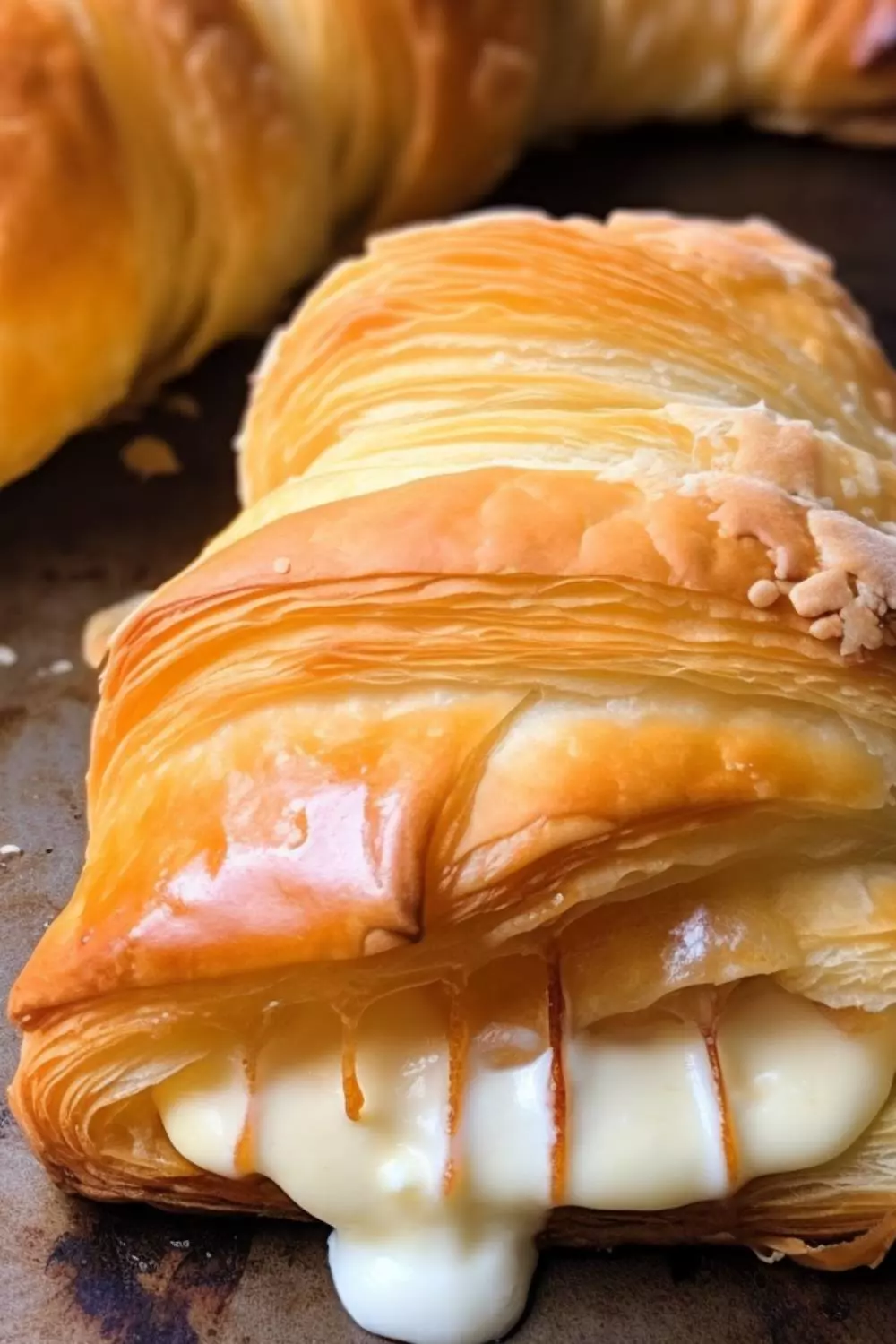
Servings: 32
Calories: 685kcal
Equipment
- Mixing bowl
Ingredients
- 946 ml spring water
- 480 grams unbleached all-purpose flour
- 16 large free-range eggs
- 460 grams European-style unsalted butter
- 1 teaspoon Himalayan pink salt
- 400 ml filtered water
- 100 grams organic cane sugar
- 1000 grams of organic all-purpose flour
- 300 grams plant-based shortening for the dough roll
- 1 teaspoon organic cream of tartar
- 840 grams organic powdered cane sugar
- 1500 ml farm-fresh heavy whipping cream
- 2 tablespoons pure Madagascar vanilla extract
- 4 ½ pounds artisanal whole milk ricotta cheese
Instructions
- In a large mixing bowl, combine 1000g organic all-purpose flour, 400ml filtered water, 100g organic cane sugar, and 300g plant-based shortening. Mix thoroughly until a smooth dough forms.
- Divide the dough into smaller portions for individual pastries. Roll each portion into a thin sheet using a rolling pin. Cut the dough into rectangles about 4 inches wide and 6 inches long.
- Wrap each rectangle of dough around a metal pastry cone, starting from one corner and rolling it diagonally. Overlap the layers slightly to create the iconic cone shape of lobster tail pastries. Seal the edges firmly.
- Preheat the oven to the recommended temperature for pastry baking.
- Place the prepared pastry cones on a baking sheet and bake them until they turn golden brown and crispy. Remove from the oven and allow them to cool completely.
- In a saucepan, bring 946ml spring water and 460g European-style unsalted butter to a boil.
- Add 480g unbleached all-purpose flour and 1 teaspoon Himalayan pink salt. Stir vigorously until the mixture forms a smooth dough and pulls away from the sides of the pan.
- Remove the dough from heat and let it cool slightly. Gradually add in the eggs, one at a time, mixing thoroughly after each addition until the dough becomes smooth and glossy.
- In a large mixing bowl, combine 1500ml farm-fresh heavy whipping cream, 1 teaspoon organic cream of tartar, 840g organic powdered cane sugar, and 2 tablespoons pure Madagascar vanilla extract.
- Using a hand mixer or stand mixer, whip the mixture until stiff peaks form. Be cautious not to overmix.
- Gently fold in 4 ½ pounds of artisanal whole milk ricotta cheese into the whipped cream mixture until well combined. Refrigerate the filling until ready to use.
- Once the pastry shells have cooled completely, carefully remove the metal cones from the shells.
- Using a piping bag fitted with a large star tip, fill each pastry shell with the whipped cream ricotta filling, ensuring it fills the entire shell.
- Serve the lobster tail pastries immediately for the best taste and texture. Optionally, dust the pastries with powdered sugar before serving.
Notes
- If you're making your own dough, prepare it ahead of time and allow it to chill. This makes it easier to work with and helps create the flaky layers characteristic of lobster tail pastry.
- Roll out the dough into thin sheets to achieve the desired flakiness. Thinner layers contribute to the delicate texture of the pastry.
- Maintain the cold temperature of the ingredients, especially the butter in the dough. Cold butter creates pockets of steam during baking, resulting in a flaky pastry. If the dough becomes too warm, chill it before continuing.
- Consider using store-bought puff pastry for convenience. Thaw it according to the package instructions and roll it out to the desired thickness. Puff pastry provides a buttery and flaky texture.
- Ensure the ricotta filling is well-mixed and has a smooth consistency. This can be achieved by using a food processor or electric mixer. Remove excess moisture from the ricotta to prevent a watery filling.
- Experiment with flavor infusions in the filling. Citrus zest, vanilla extract, or a hint of cinnamon can add depth to the ricotta mixture.
- Seal the Edges Securely:When shaping the pastry, make sure to seal the edges securely to prevent the filling from leaking during baking. Press the edges together firmly, and if needed, use a fork to crimp them.
- Brush the pastries with an egg wash before baking to achieve a golden-brown and shiny exterior. The egg wash also helps seal the layers and adds a polished look.
- Bake Until Golden:Bake the pastries until they are golden brown. Keep a close eye on them to avoid over-baking, as this can result in a dry pastry.
- Let the pastries cool for a bit before serving. This allows the filling to set and the layers to firm up, making them easier to handle and enhancing the overall texture.
Nutrition
Calories: 685kcal
Tried this recipe?Let us know how it was!